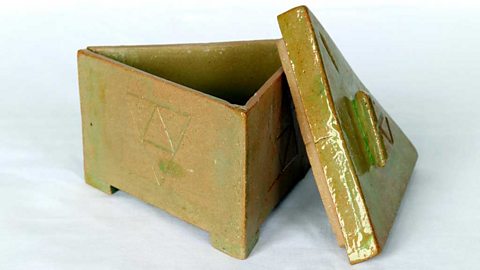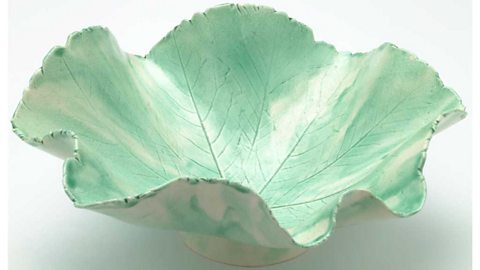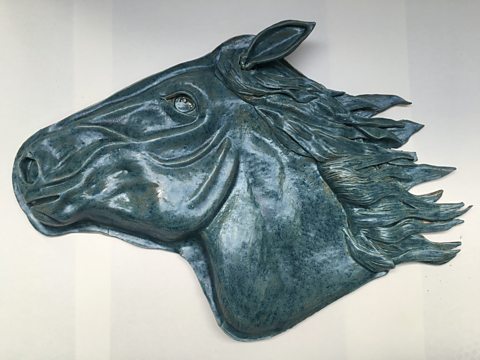Slab building and relief

Slab building needs careful preparation but can make some impressive sculptural objects or vessels.
A lump of clay is first rolled out onto either a sheet of fabric or paper, using a rolling pin. The clay needs to be flipped over and rotated to achieve an even slab.
Slabs are easier to work with once they have reached the leather-hardWhere clay has partially dried but not entirely stage. They can be cut using a potterâs knife or sharp modelling tool.
To attach slabs together, the two connecting edges need to be scoringA light crosshatching that is applied to clay surfaces to join them together, for example when coiling or constructing slabs. and slipDried, broken up clay that is mixed with water. It can be poured into moulds for slip casting or used on scored sections of clay to join pieces together. Thoroughly dried out clay must be used in order for this to break down into a smooth paste.. The slabs are pressed firmly together along the joining edges - the slip binds them.

Relief

Relief puts less stress on the clay so it is less likely to crack when fired. Slabs of clay can be laid over preformed objects to create 3D shapes. These can then be built upon using modelling and hand building techniques. This is useful for making masks.